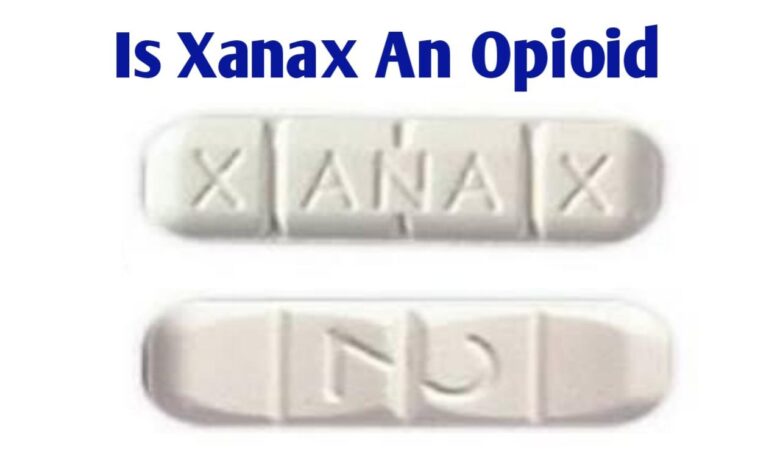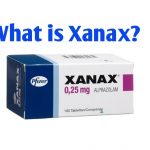Is Xanax an Opioid (Narcotic)?

Opioids, sometimes called narcotics, are a class of drugs that include the illegal drug heroin, synthetic opioids such as fentanyl, and pain relievers available legally by prescription, such as oxycodone. The term “opioids” includes compounds that are extracted from the poppy seed as well as semisynthetic and synthetic compounds with similar properties that can interact with opioid receptors in the brain.
All opioids are chemically related and interact with opioid receptors on nerve cells in the body and brain. Opioid pain relievers are generally safe when taken for a short time and as prescribed by a doctor, but because they produce euphoria in addition to pain relief, they can be misused (taken in a different way or in a larger quantity than prescribed, or taken without a doctor’s prescription).
Why does opiods abuse lead to addiction?
The regular non-medical use, prolonged use, misuse and use without medical supervision can lead to opioid dependence and other health problems. Opioid dependence is a disorder of regulation of opioid use arising from repeated or continuous use of opioids. The characteristic feature of dependence is a strong internal drive to use opioids, which manifests itself by impaired ability to control use, increasing priority given to use over other activities and persistence of use despite harm or negative consequences. Physiological features of dependence may also be present, including increased tolerance to the effects of opioids, withdrawal symptoms following cessation or reduction in use, or repeated use of opioids or pharmacologically similar substances to prevent or alleviate withdrawal symptoms.
Worldwide, about 269 million people (or 5.3% of the global population aged 15-64 years) used drugs at least once in 2018. Among them, about 58 million people used opioids. About 35.6 million people suffered from drug use disorders in 2018.
How do opiods Work?
Opioids bind to and activate opioid receptors on cells located in many areas of the brain, spinal cord, and other organs in the body, especially those involved in feelings of pain and pleasure. When opioids attach to these receptors, they block pain signals sent from the brain to the body and release large amounts of dopamine throughout the body. This release can strongly reinforce the act of taking the drug, making the user want to repeat the experience.
What is Xanax?
Xanax is the brand name for Pfizer’s brand of Alprazolam, a short-acting tranquilizer of the triazolobenzodiazepine class, which are benzodiazepines fused with a triazole ring. Pfizer is an American multinational pharmaceutical and biotechnology corporation headquartered in Manhattan, New York City.
Xanax works by decreasing abnormal excitement in the brain. The Food and Drug Administration (FDA) approved it in October 1981. Benzodiazepines act on the brain and central nervous system (CNS) to produce a calming effect. Xanax is a federal controlled substance (C-IV) because it can be abused or lead to dependence. Keep this medicine in a safe place to prevent misuse and abuse. Selling or giving away Xanax may harm others, and is against the law. Tell your healthcare provider if you have abused or been dependent on alcohol, prescription medicines or street drugs.
What does Xanax do?
Xanax slows down the movement of brain chemicals that may have become unbalanced, resulting in a reduction in nervous tension and anxiety. Xanax works by boosting the effects of a natural chemical called gamma-aminobutyric acid, which is made in the brain.
Xanax is used to treat anxiety disorders and anxiety caused by depression. Xanax is also used to treat panic disorders with or without a fear of places and situations that might cause panic, helplessness, or embarrassment (agoraphobia).
Is Xanax a narcotic?
No, Xanax is not an opioid medication, as earlier described above it belongs to a class of drugs called benzodiazepines (benzos). While not a narcotic (opioid) itself, it’s possible it may be prescribed along with opioids, but this can be harmful. Like opioids, Xanax is a controlled substance. The active ingredient alprazolam is a Schedule IV controlled substance, which is less likely to be abused than a Schedule III drug, but it still has the potential for abuse.
It is important to note that opioids can produce some of the same side effects as Xanax, such as slowed movements, slurred speech and slowed brain function. However, instead of anxiety-related disorders, opioids are prescribed for pain.
Some of the effects that Xanax produces that opioids do not include lightheadedness, confusion, memory problems, balance problems, weight gain, changes in appetite, decreased sex drive and fatigue. Alternatively, some of the effects that opioids produce that benzodiazepines do not, include dizziness, itching, addiction, abdominal pain and headache.





